What do the Touareg want? Well, find me a person called ‘the Touareg’ and maybe he or she will tell us. You might as well find ‘the English’ or ‘the Japanese’ and ask them what they want while you’re at it.
A nation or people rarely if ever think as one. In the case of the Touareg, difference and disharmony is exacerbated by their vast desert habitat and dispersed nomadic lifestyle, both of which tend to foster an allegiance to blood and tribe that is stronger than their attachment to nation or ideology and militate against collective thought or action.
It can be argued that the very notion of a people called ‘The Touareg’ is an invention of 19th century explorers and anthropologists, who adopted this supra-tribal and alien, i.e. Arab, collective noun to group together the Amazigh or Berber speaking nomadic tribes of the southern Sahara. Before ‘Touareg’ there were only different clans loosely affiliated by their language and cultural habits; Taitoq, Kel Ghela, Kel Ajjer, Kel Gress, Kel Fadey, Kel Ferwan, Ifoghas, Taghat Mellet, Iwellemeden, Chamanamas, Kel Antessar, Daoussahak…the list is long.
And all these clans were further sub-divided into sub-clans and sub-sub-clans. Within one of the six large confederations – the Kel Ahaggar, Kel Ajjer, Kel Aïr, Kel Adagh, Iwellemeden and Kel Taddemakkat – clans and sub-clans were organized into a complex hierarchy of nobles, vassals, warriors, artisans, marabout and slaves. This intricate social structure, which is well nigh-impossible for an outsider to grasp instinctively, underpins modern Touareg politics, despite the considerable erosion of the old clan system in the past century or so.
This historical backdrop, coupled with the fact that the Touareg share their living space with other ethnicities like the Arabs, Fulani and Songhoi, all of whom have their own layered clan structure, makes the Sahara one of the most complex places on earth for an outsider to understand.
Today, the Touareg are a made up of individuals with residual tribal allegiances, different levels of wealth and social position, different attitudes to religion, life and the world beyond their horizon.
Amongst the Touareg of northern Mali, you will find every shade of opinion from diehard nationalist through moderate Islamist, convinced Salafist and heartfelt loyalist – loyalist to the Republic of Mali that is. Some of the secular cadres and footsoldiers of the National Movement for the Liberation of Azawad (MNLA) still cling to their nationalist dream of complete independence from Mali. Others realize that forces beyond their control won’t them to realize this ultimate goal, and are pragmatically realigning the aims and objectives with a autonomy within the current borders of Mali, or some kind of federal solution.
The leaders of what remains of the hardline Islamist militia Ansar ud-Dine trust that Allah and his unbending law will put their world to rights, whilst maintaining links with out-an-out mafia-terrorist organisations such as Al Qaida in the Islamic Maghreb (AQIM) or the West African Movement for Oneness and Jihad (MUJAO). The ‘moderate’ Islamic Movement of Azawad (MIA), either for ideological or opportunistic reasons, most likely both, has severed all ties with Ansar ud-Dine, and is pursuing a more conciliatory line which nonetheless shares most of the MNLA’s autonomous ambitions. Loyalists like the Touareg militia leader Alhaji Ag Gamou, who has re-entered the fray in northern Mali after languishing for ten months in exile in Niger, keep faith with the Republic of Mali and its promise of advancement for Touareg social groups that were once firmly at the bottom of the tribal pile.
Disharmony and enmity between different Touareg groups and individuals has always existed. At independence in 1960, Mali, Algeria and Niger effectively co-opted the French strategy of divide and rule to deal with their Touareg populations, favoring and advancing ‘friendly’ tribal chiefs whilst curtailing the power of hostile ones. When seething tensions in the north east of Mali burst into open rebellion in 1963, the two sons of the amenokal or chief of the noble Ifoghas clan who ruled in northeastern Mali, were on opposite sides of the argument. Intallah Ag Attaher favoured making peace with the Malians and finding an accommodation within the new socialist republic, whilst his brother Zeyd Ag Attaher sided with the rebels and paid for it by spending over a decade in one of the remotest prisons on earth, up near the salt mines of Taodenni in the far north of Mali.
Perhaps, at this stage, it’s worth giving a brief answer to the most essential of questions: why did the Touareg of northeastern Mali rebel in the first place? Nina Wallet Intallou, ex-Malian politician and member of the MNLA’s executive council, proffers the simplest of answers; because the new nation was a mistake. What she means is that the new borders of Mali divided the Touareg of north eastern Mali from the Arab and Berber dominated desert lands further north, with which they had deep economic, cultural and historical ties, and lumped them together with the sedentary black people of the south, with whom they had less in common.
Many Touareg could not see why the Bambara, Soninké and Malinké people of the south should impose their language, culture and socialist ideas on them, especially as these ‘blacks’ had never actually vanquished the Touareg in battle, which, although painful, might at least have given their new overlords some kind of legitimacy. And, yes, racism was part of mix as well. Some northern Touareg and Arab leaders argued that they came from noble Cherifian lineages that went right back to the Prophet Mohammed and, as such, found the idea of being subservient to less ‘favoured’ southern blacks completely unacceptable.
Meanwhile, the new rulers of Mali, hundreds of kilometres down south in the capital Bamako, thought of the Touareg as belligerent, racist, feudal, arrogant and lazy. They couldn’t understand why these recalcitrant nomads refused to salute the new Malian flag and accept the government’s bright new socialist ideas, especially their modern ‘scientific’ collectivised farming methods or the secular school curriculum, all of which, the new leaders hoped, would drag the Touareg kicking and screaming from their outmoded, ‘medieval’ way of life and into the 20th century.
It was, in short, a dire mismatch. The first rebellion of 1963 and its brutal suppression by a paranoid and inexperienced Malian army ensured that relations between the central government and their far-flung nomads in the north got off to the worst possible start. The bitterness generated by the conflict was deepened by the terrible droughts of 1972-3, during which up to 80% of the northern animal herds died and thousands of Touareg families were forced to flee the country in search of food and work. The corrupt misappropriation of aid by government officials during the crisis only made things worse.
From about 1985 right through to the signing of the National Pact in 1992, which signaled the official end of the great rebellion of 1990-1, the Touareg rebel movement was perhaps more unified under the leadership of the then firmly secular and nationalist Iyad Ag Ghali than it has ever been, before or since. But after the Pact was signed, the movement split along tribal lines into a chaotic alphabet soup of different militias, some of which ended up actually fighting each other in open combat. At the roots of this split was a jealousy and fear of the ruling Ifoghas tribe, to which Iyad Ag Ghali belonged. Other competing tribes like the Idnan and Taghat Mellet formed their own rival rebel group, in which Imghad or ‘vassal’ groups, think of them as the Touareg working classes (a gross over simplification, but I fear more complexity at this stage will simply loose you dear reader), slowly gained prominence and eventually ended up fighting a bitter internecine war with the Ifoghas.
As the 1990s progressed, the new democratically elected Malian government of President Amadou Toumani Touré, an ex-soldier who many Touareg accused of perpetrating atrocities against civilians during the rebellion, did little to honour the promises made in the National Pact and continued the policy of divide and rule in the north. Rebellion broke out again in 2006 and then again in January 2012. In fact, many Touareg argue that the north has been in one constant state of rebellion, with periods of greater or lesser open armed conflict, since 1963.
Nonetheless, the status of the Touareg within the Malian republic has undoubtedly changed over the years, whatever the ultra-nationalist Touareg might say. When Mali threw out the military dictatorship of Moussa Traore and brought in multi-party democracy in 1992, which heralded a period of great hope and social dynamism in the country, the total isolation that the Touareg of the far north east had known since independence was broken. Touareg leaders were given representation in national politics, and in 2002, for the first time ever, a Touareg was nominated prime minister. Even though many of the funds allocated to developing the north were embezzled, either by corrupt local leaders or central government officials, some of the money did get through and some schools, wells and clinics were built, although far too few in the eyes of those who continued to clamour for development and independence.
Touareg clans who had been subservient to the warrior-nobility in colonial times, such as the vassal Imghad or Bellah (‘slaves’) favoured the weakening of the old social hierarchies that being citizens of the Republic of Mali inevitably entailed. It gave them the chance to climb up the social ladder and achieve both wealth and status, a redrawing of social boundaries that often angered old clan bigwigs. The Malian government also favoured a few talented Imghad men when it came to filling important vacancies in local administration or the army, much to the envy and fury of some belonging to ‘nobler’ tribes.
Furthermore, many younger Touareg, born after the years of drought and deprivation in the 1970s and 1980s were less driven by the notion that a future within Mali was impossible. They had, de facto, been Malian all their lives. Many had traveled to the south and learned at least a few words of Bambara. They listened to southern music and watched TV programmes made in Bamako. Whilst they still felt separate in many ways, that sense of alienation was weaker than it had been in their parents’ day.
But the bitterness and frustration remained and so did the marginalization. Touareg soldiers like Hassan Ag Fagaga, leader of the 2006 uprising, seethed at being denied promotion in the Malian army. Touaregs saw injustice in the fact that there was hardly any Tamashek music on national TV and absolutely no Tamashek language programmes. They bemoaned the lack of proper schools, clinics and roads in the north east. Furthermore, bitter old memories continued to die hard. Most of the Touareg rebel leaders in northern Mali are the “sons of ‘63”, in other words, men whose parents suffered great injustices in the uprising of 1963. Ghali Ag Babakar, the father of Islamist leader Iyad Ag Ghali, was killed in that uprising, as was the father of Mohammed Ag Najm, the military leader of the MNLA. Their hurt is still visceral and deep, as is their mistrust of the government in Bamako.
Islamism, however, is an entirely new element in this story. Until the mid 1990s, no Touareg leader had ever fought a rebellion in order to impose his brand of Islam on others by force. It was around 1995 that proselytising preachers from the Tablighi Jama’at, a peaceful Pakistani Muslim missionary organisation, started spreading their daw’ah or ‘summons’ throughout Mali. Iyad Ag Ghali, fascinated by their message, invited them up to Kidal in the northeast. He was disillusioned by the fractiousness of Touareg tribal politics and had more or less come to the conclusion that an independent Touareg state in northern Mali would never work. Moreover, although he doesn’t belong to the sub-clan of the Ifoghas from which the clan chief is chosen, he hoped that by associating himself with this new Islamism he would reinforce his prospects of becoming the first non-hereditary leader of the Ifoghas Touareg. No one doubted his supreme talents as a military and political leader, but Ag Ghaly lacked legitimacy as a religious figure. He figured that an association with the ‘alien’ Salafi doctrines of the Tablighi Jama’at and their logical ‘modern’ view of Islam might provide him with that legitimacy and allow him to contest the authority of Intallah Ag Attaher, the current aging leader of the Ifoghas clan.
Other figures in the Ifoghas nobility were also seduced by the ‘purist’ Salafi teachings of the Tablighi preachers, including Alghabass Ag Intalla, the current leader of the MIA, and the notorious war lord Ibrahim Ag Bahanga, who was killed in a ‘car crash’ in the summer of 2011. [NB Getting ‘killed in a car crash’ is often a desert euphemism for being assassinated in some way]. But in the end it only was Iyad Ag Ghali and a very close coterie of fellow Ifoghas who immersed themselves entirely in this new religious philosophy. Some, including Iyad, went so far as to further their studies at a Tablighi centre near the city of Lahore in Pakistan and at mosques in Bamako and Paris. He also became very strict and puritanical in his outlook and personal habits.
After Islamist terror groups from Algeria started to operate in northern Mali from about 2001 onwards, they soon made common cause with Iyad and a small but growing group of Touareg Salafists. Moreover, the GSPC, precursor of Al Qaida in the Islamic Maghreb (AQIM), began to earn large sums from kidnapping, smuggling and money-laundering. Their presence and nefarious activities skewed the economy of northeastern Mali, such as it was, and realigned it around kidnapping, and the smuggling of drugs, arms, cigarettes, stolen cars. Tourism died a swift death, and, thanks more to desperation than religious fervour, some young Touareg accepted employment with the Islamists as drivers, informers, foot soldiers and runners.
In order to undermine the continuing Touareg insurgency, the governments of Mali and Algeria at best tolerated this presence and, at worst, actually encouraged it in clandestine ways. Confusing the cause of Touareg self-determination with that of Islamic militancy bought Mali kudos in the international community and enrolled their decades old secessionist problem into the much wider and better publicised global war on terror. France and the USA reacted to the creeping presence of Al Qaida-affiliates in northern Mali by boosting military aid, money that often disappeared into the pockets of corrupt politicians and generals. Eventually, the Touareg nationalist cause became synonymous with Islamism, Al Qaida, Osama Bin Laden and the global war on terror. The effect was a very neat emasculation of Touareg dreams and a deep tarnishing of the Touareg image in the eyes of the rest of the world.
With weapons stolen from Colonel Khadafy, a man who had always dampened Touareg ambitions whilst seeming to support their cause, the latest and most far reaching rebellion was launched a year ago. But it was hobbled from the outset by disunity. A large number of the Touareg soldiers who returned from Libya belonged to a tribe called the Idnan who had traditionally competed with the Ifoghas for dominance in the northeast. Iyad Ag Ghali demanded to become leader of the new rebellion but his advances were rejected. He also tried to impose his Salafi philosophy on the movement, but he was once again turned down. Smarting from this rejection he formed his own militia, Ansar ud-Dine, to which the best Ifoghas fighters soon swore allegiance. Blood proved thicker than water, or political philosophy for that matter, and furthermore, his coffers full of AQIM money, Iyad was able to pay and equip his army properly. His aim was not independence but Shari’ah law for all of Mali. He ‘lent’ his muscle to the MNLA but when the Malian army were defeated in May, he and his backers in AQIM hi-jacked the whole uprising and turned it into an Islamist takeover. The MNLA meanwhile, abandoned by most potential backers at home and abroad, limped along without the necessary funds.
Now, the Touareg nationalist cause has been as good as buried under a tempest of paranoia about “Al-Qaida linked terrorists” in the Sahel, a new front in the global war on terror and all the other pat phrases that the media habitually resort to in these circumstances. Iyad Ag Ghaly and his fellow Ifoghas Salafists will obviously bear the brunt of the blame for this turn of affairs. His reputation in certain Touareg circles, once fairly glowing and venerable, is now devilish indeed.
France has piled in to stop the rot. Malians are understandably jubilant. But contrary to what the British Prime Minister David Cameron said in the House of Parliament recently, this isn’t primarily a global problem. It’s a very local one. Yes, the Algerian terrorists who run AQIM have sworn allegiance to the global Al Qaida franchise. Yes, they dream the same dreams and talk the same flowery language as jihadis in Somalia, Yemen and Afghanistan. But the prime reasons behind the existence of radical armed terrorist groups in northern Mali are all to do with local problems; poverty, underdevelopment, corruption, crime, regional self-determination, ethnic aspiration etc etc. To wade in with MIGs, tanks and boots on the ground without understanding the specific local problems facing people in northern Mali is to court eventual defeat and disaster.
Perhaps, on deep reflection, it’s possible to define a few hopes and dreams that unite most Touareg. I say ‘most’, because total agreement seems virtually impossible. A visceral attachment to their earth, to the beauty, pristine wildness, simplicity and space of their desert home seems to be almost universal. So is the deep nostalgia or assouf felt by most Touareg when they’re absent from it, either by compulsion or of their own free will. This feeling alone accounts for the emotional power of 90% of all Touareg music, including that of world famous Touareg guitar groups like Tinariwen, Tamikrest and Terakaft.
Most Touareg want to see this natural beauty, this freedom of the wide open spaces preserved and with it the nomadic pastoralism that has been practised there for millennia. Then again, there are some, a few, that consider nomadism to have no future at all and who urge their fellow Touareg to accept the sedentary life as the only route to a modern and sustainable future.
Allied to nature and nomadism is the Touareg’s unique Berber culture, especially their language, which is called Tamashek and their alphabet, the oldest in the world to have been kept in continuous use, which is called Tifinagh. Keeping Tamashek alive has been a major motivation behind the Touareg rebellions of the past, spurring demands for Tamashek education and Tamashek speaking television channels
Then there are the other mainstays of Touareg culture that most Touareg treasure. Among them are music, poetry, jewellery-making, leather-working, story-telling, traditional healing, camel breeding and more. But, once again, this cultural pride isn’t felt by all Touareg. A tiny ‘lunatic’ fringe of Salafi Touareg consider their Berber culture to be backward and irrelevant in the modern world, a folksy throw-back kept alive by meddling western anthropologists. They would prefer their people to adopt Arabic, the language of the Qu’ran and of the wider Muslim community. With that they would welcome a greater Arabisation of the Touareg. They deem certain other aspects of Touareg culture, especially music and dance, to be licentious and ungodly and they object to the relative freedom and social power that Touareg women enjoy. They also revile the old ‘backward’ Sufi traditions of Islam that most Touareg adhere to.It’s important to stress however that these Salafi attitudes are shared by a small minority of Touareg. Unfortunately, that minority includes a few of the most powerful men in Touareg society, including Iyad Ag Ghali.
Lastly, almost all Touareg bemoan the dearth of social and economic development in their homeland since the end of colonialism. They would like to see more schools, more health clinics, more wells, better roads, cheaper petrol, cheaper food, better distribution of goods, less criminality, more peace and stability. When a Touareg musician sings that his desert is dying of thirst, this is what he means. Without development, the desert is going nowhere.
These then are the dreams that most Touareg share. It’s the conflicting views on how to make those dreams come true that divide them. The nationalists believe that Mali can no longer be trusted to serve the best interests of the Touareg. They argue that the Touareg and other northern ethnic groups, especially the Arabs, will forever be marginalised and discriminated against within a Malian state. Only independence can guarantee a future for the Touareg people and their culture. The MNLA have also been at pains to prove that this opinion is shared by all the major ethnic groups in the north – Touareg, Arab, Songhoi, Fulani, Bozo etc. Mostly however, it’s only Touareg and Arabs who buy into it in large numbers. The nationalists also look outwards and favour alliances with foreign powers and international institutions such as the UN and the EU, as long as they further the cause.
The hardline Islamists believe that borders only serve to divide up the great Muslim community or ‘ummah’ and will eventually lead to greater human suffering and evil. For them, a simple and strict adherence to the word of God and to his law is all the Touareg and the greater Malian nation need in order to eradicate the vices introduced from the west and re-establish a safe, clean and prosperous state of affairs in the Sahel. They distrust the west of course, and if help is needed, prefer to consider local resources or appeal to other Muslim states, especially those in the Middle East like Saudi Arabia or Qatar, for support. Iyad Ag Ghali himself is especially adamant that Muslims should help each other and not go running cap in hand to infidels. That is why he chose to make a pact with Al Qaida and accept their ‘dirty’ money in his fight to create an Islamic Republic in the north of Mali, even though he doesn’t necessarily share AQIM’s cold hatred of all things non-Muslim or their propensity to target innocent people. More moderate Islamists like Alghabass Ag Intalla have rejected this alliance with the ‘narco-terrorists’ and aligned themselves with MNLA whilst maintaining their insistence that the future autonomous region of Azawad should essentially be founded on Islamic principles, in legal, political and moral terms at least.
It must be said that what motivates Touareg Islamist leaders like Iyad Ag Ghali and what spurs young Touareg men to join his cause isn’t necessarily the same. For the latter, the promise of safety within a large, powerful and well-armed group coupled with the prospect of good equipment and regular salary are major attractions. Furthermore, for a young man who has known only poverty, unemployment and hopelessness is recent years, a job and concomitant status with Ansar ud-Dine can seem bright and attractive. The fact that Ansar ud-Dine has seem its ranks heavily depleted almost overnight following the French intervention is proof of the opportunistic motives of many of its former footsoldiers.
Some have even claimed, probably too charitably, that Iyad Ag Ghali created Ansar ud-Dine in order to given young Touareg a chance to express what he believed to be their natural Islamic identity whilst avoiding the compromise of joining the Arab dominated Al Qaida in the Islamic Maghreb. In other words Ansar ud-Dine offered young Touareg the opportunity to be both genuine Islamists whilst preserving their essential Targuité or Touaregness.
Lastly, there are the loyalists who prefer to see Mali remain intact. They believe that a Touareg dominated state in the north is an impossibility. The Touareg are simply too internally divided, they say, too inexperienced in terms of administration and statesmanship and too dominated by self-serving clan elites to make an independent state viable. They’ll probably admit that Mali is far from perfect, but better to build a future within its democratic and republican confines than accept the possibility of an autocratic ruler in the north, who needs must will inevitably resort to repression and violence in order to keep all the disparate tribal and ethnic tensions in an independent Azawad at bay.
Moreover, what would an independent Azawad actually live on. Gold? Oil? Phosphates? Livestock? Tourism? The economic life of the Sahara is simply too fragile, and too dependent on more urban societies to the south and north to exist independently. Lastly and most importantly, Azawad is an impossibility simply because Algeria would never allow it.
This loyalism is common not only among the Imghad clans of the far north east, but among other Touareg tribes who have had a less tortured relationship with Bamako in the past than that of the Ifoghas. These include the giant Iwellemeden confederation of the Menaka area, the Kel Antessar of Timbuktu and Goundam and the Chamanamas of the Gao region. But then again, within all those groups, the full range of opinions can still be found.
So what do the Touareg want? Impossible to say in one snappy soundbite. Except perhaps, a good drenching of rain to soak the parched earth every summer. But that, only the Almighty can provide.
Andy Morgan (c) 2013
First published in Al Jazeera English Online eMagazine. Download it from iTunes!

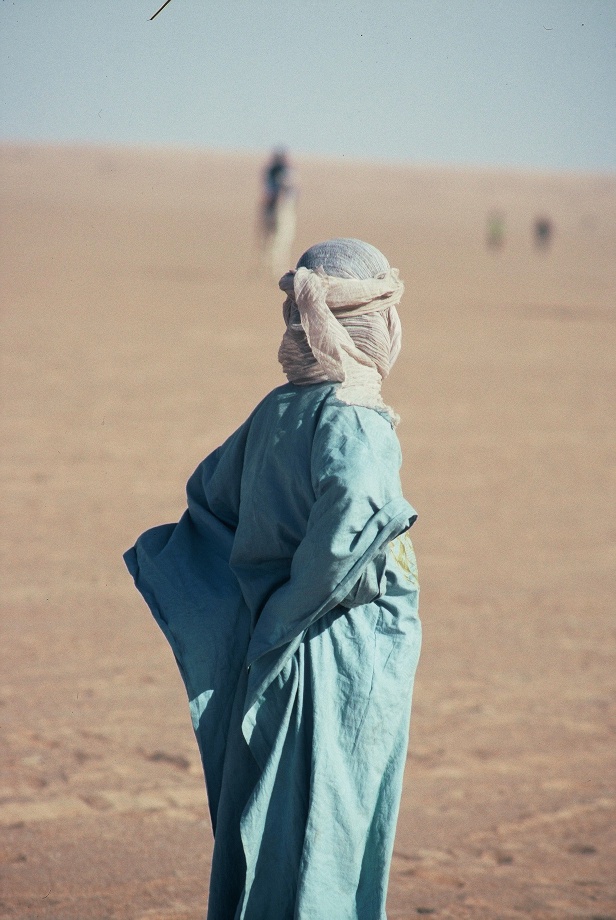
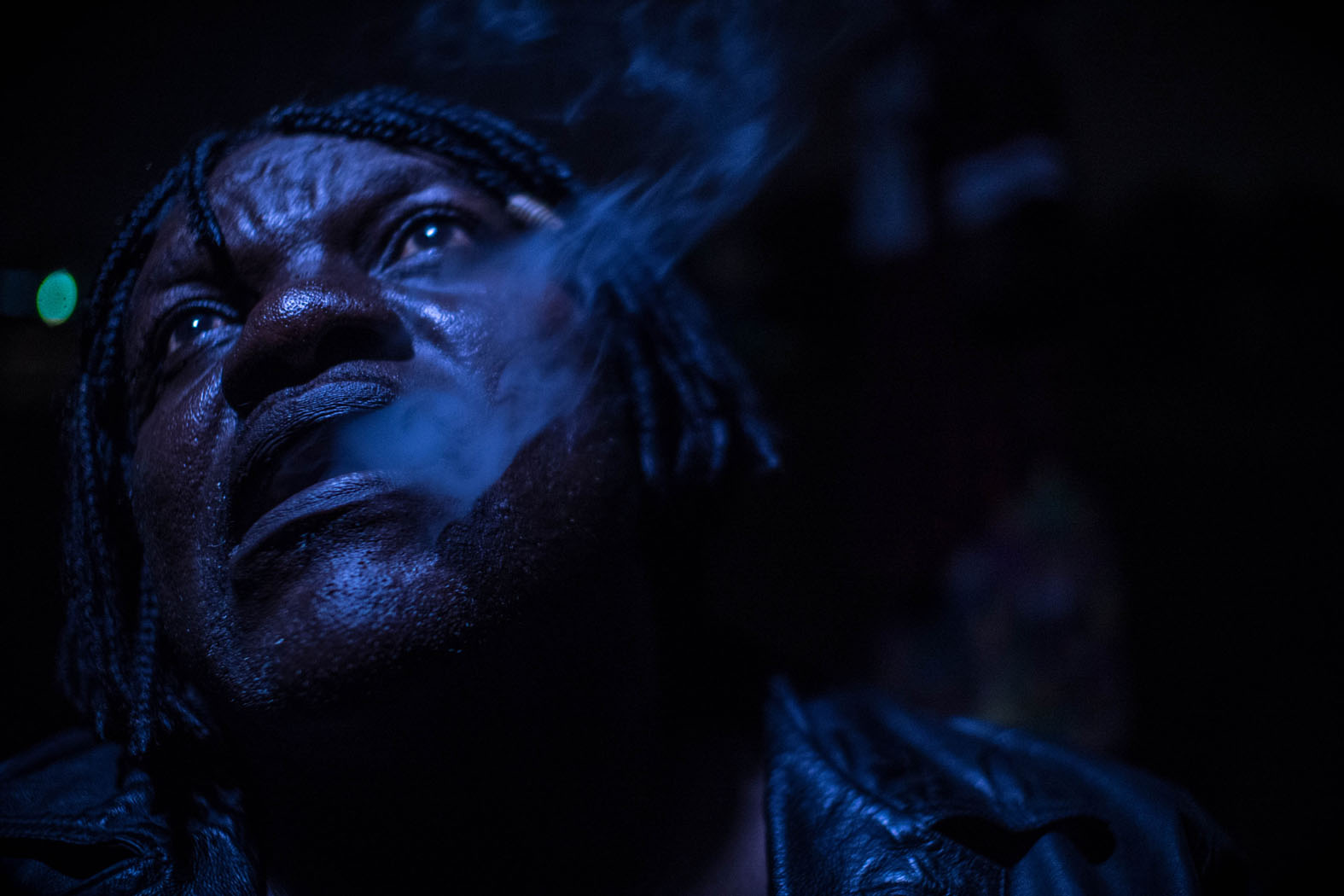
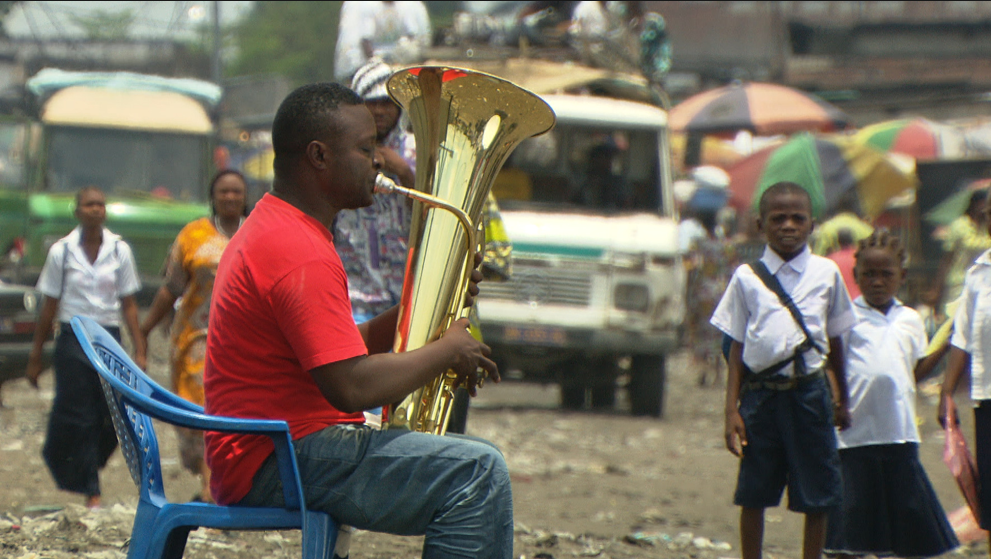

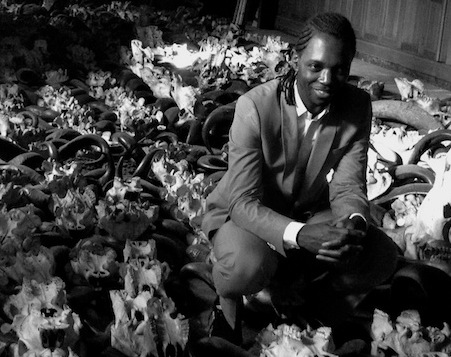
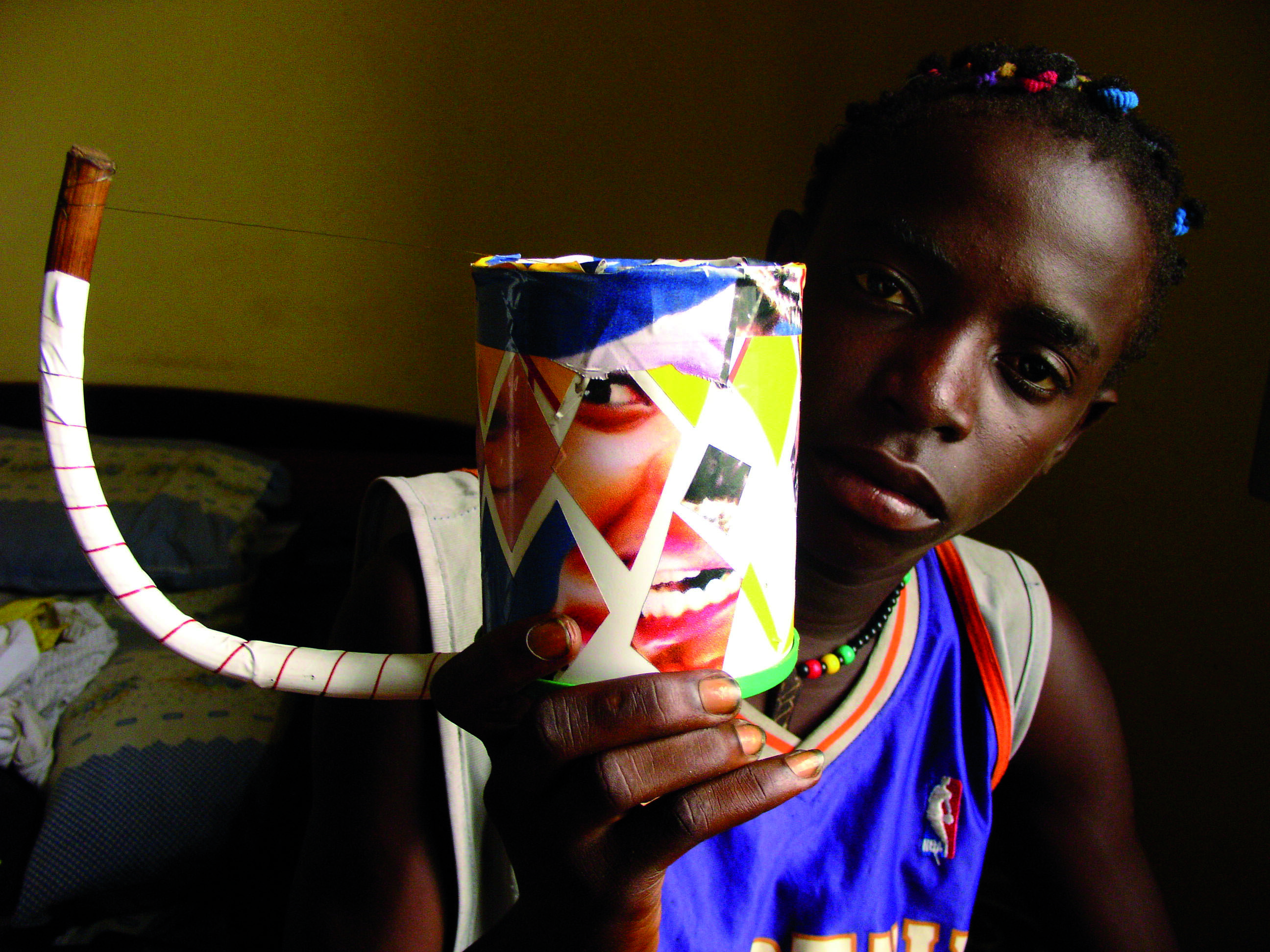
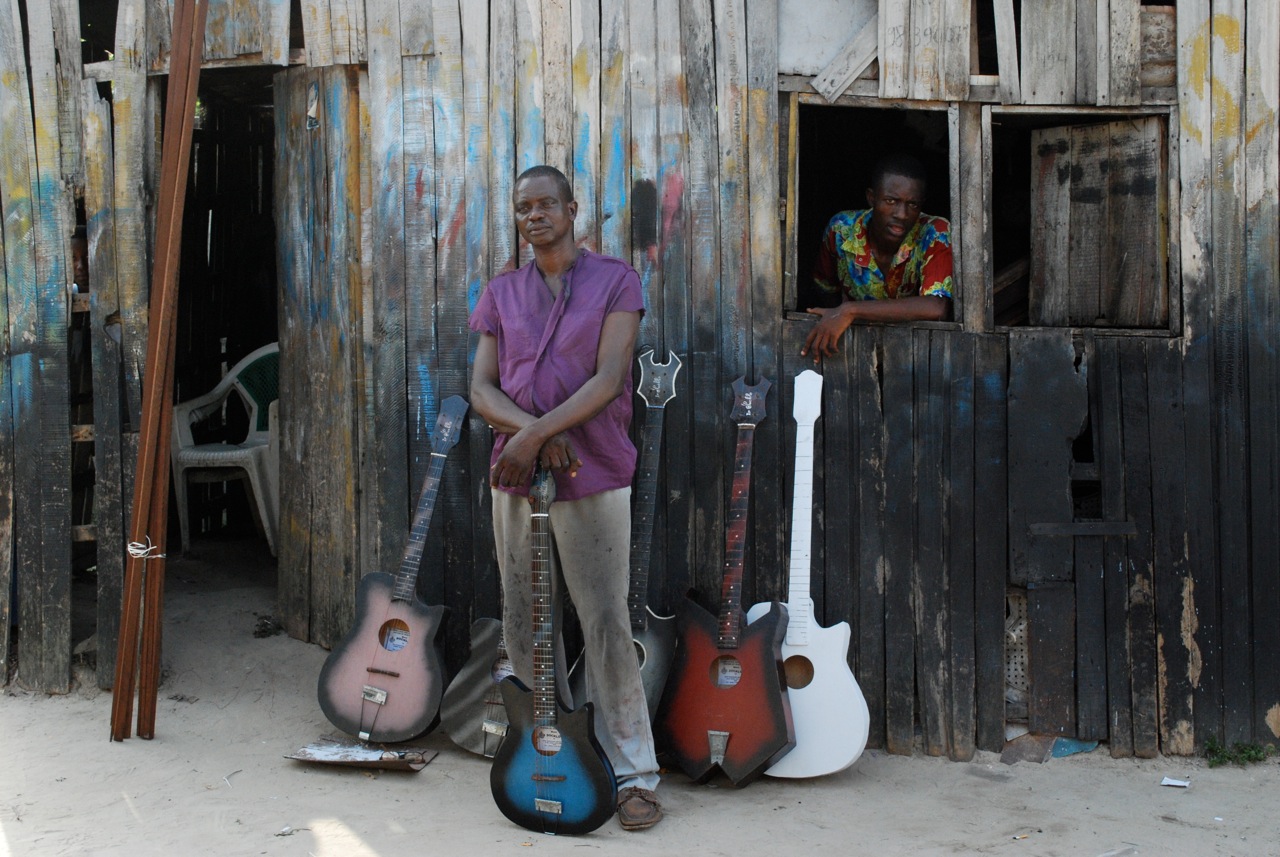
7 comments for “What do the Touareg want?”